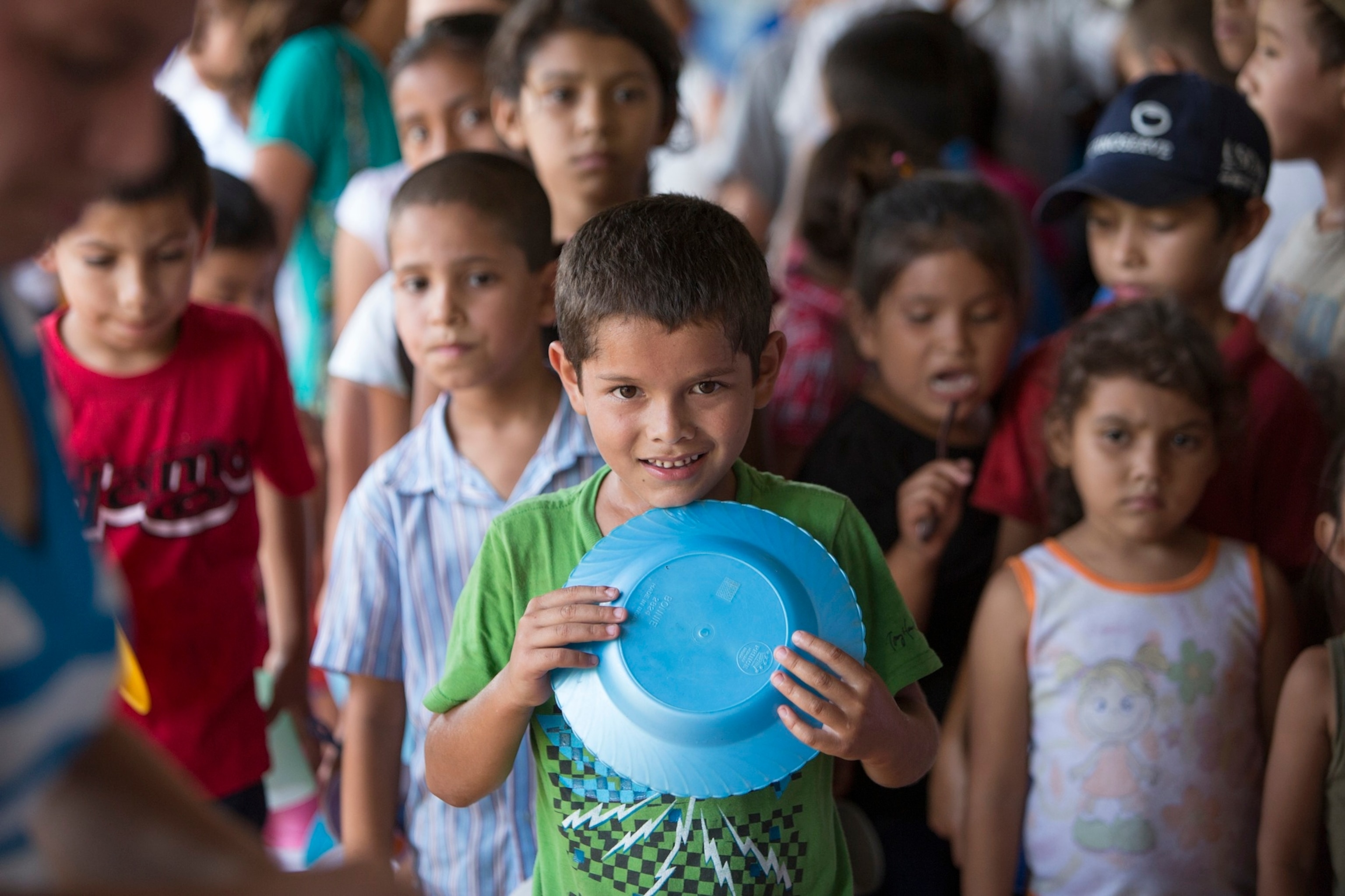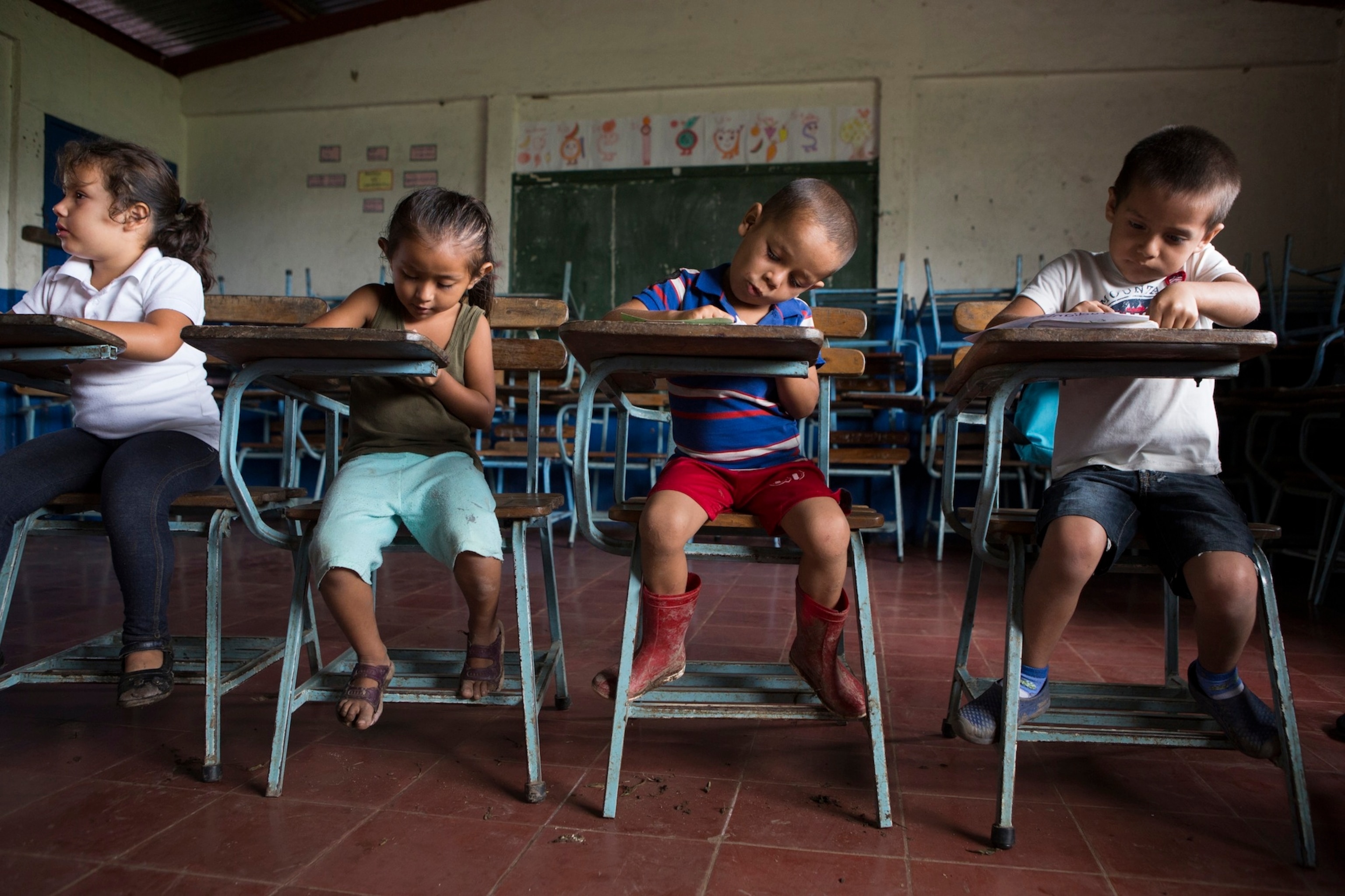Michael Kors asked Halle Berry to go to Nicaragua on behalf of Watch Hunger Stop. There she joined the United Nations World Food Programme (WFP), to visit schools and meet children helped by the campaign.
Never underestimate the role of good food in the health and life of a child. It’s everything. It is that simple.
It’s something I know from my own young children—but the lesson was underscored while working on a project this summer.
This past July, I was part of a team from National Geographic that traveled to Nicaragua, the second poorest country in the Western Hemisphere. Our assignment brought us to the northern region of Jinotega, which produces 65 percent of the country’s coffee. It is a verdant mountain landscape where locals boast that nearly anything grows. And yet many struggle to put food on the table.
As a photojournalist, I often focus on challenging issues and problems. This time, however, I was there as part a team documenting a solution: a school meals program run by the United Nations World Food Programme (WFP) with support from Michael Kors’s Watch Hunger Stop initiative. We were visiting a local school, El Progreso (Progress School) in the rural farming village of Los Pedernales.
The first morning that we arrived at the school, children drifted in, walking across fields of grass and climbing through the barbed wire fences that kept out wandering livestock. The preschool and elementary ages were divided into three classrooms serving about 80 children in total. The open-air rooms bubbled with sounds of school everywhere—teachers’ authoritative voices, the chatter of curious students with their hands up, and the scribbling of pencils on writing tablets. Teenagers cutting the grass at the school even hung near the open windows, listening to catch some of the lessons. All seemed pretty orderly and calm… until lunchtime.
Mid-morning, one of the mothers arrived with a hot lunch for the entire school. The food was delivered by WFP thanks in part to the support of donors including Michael Kors. Once a month, each family takes on the responsibility to prepare lunch. This collective approach spreads the workload and deepens the village’s commitment to the program.
When lunch arrived, children jumped up to wash their hands and retrieve their plastic bowls. They lined up to be served. Everything was orderly. The kids spread out to eat, some staying at their desks, others sitting outside in the courtyard. The tortillas became little spoons, scooping up the beans.

After lunch, the kids went wild with renewed energy—their batteries had been fully charged! Rambunctious and loud and running and jumping, it was as if they had been jolted to life by the food. In fact, they had. One of the WFP staff members told me that it was not uncommon to see the activity level jump like that. Many arrive at school without having eaten anything.
The fact is that rather than supplementing a child’s diet, the school lunch program has become the critical cornerstone of health in a nutritionally precarious part of the country. This lunch was their most dependable meal of the day, literally giving them the fuel they needed for learning and life.
This story is part of National Geographic’s special eight-month Future of Food series.






